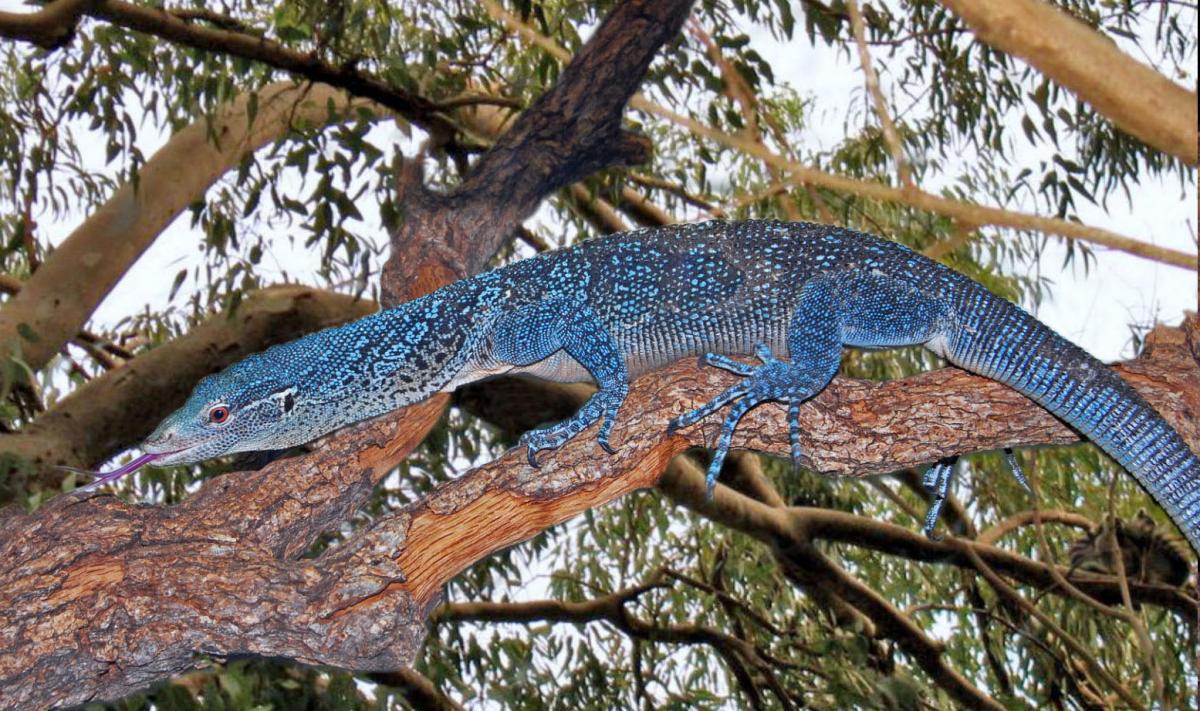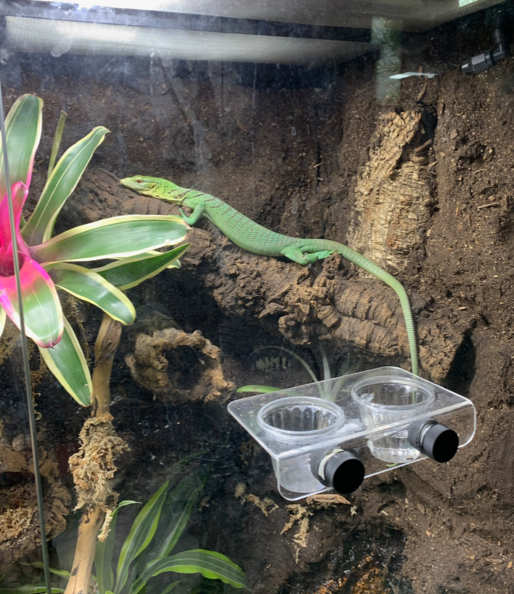Basic Care: Tree Monitors
Tree Monitors are native to forest areas in Papua New Guinea, Indonesia and parts of Australia. They come in a varsity of colors including the blue (Varanus macraei), black (Varanus beccari), green (Viranus prasinus) and yellow (Varanus reisingeri) with the blue tree monitor being the largest. The average male is approximately 42 in (3.5 ft) and females tend to be about 4 inches smaller in size. The other sub-species range in size from 24-36 in (2-3 ft). Being diurnal, these lizards are very active during the day and will often be seen basking, climbing and when kept as pets exploring their enclosures. They are arboreal, or tree dwellers, and spend little time on the ground. They use their long, slender limbs, and a prehensile tail that is 2/3 of the total body length to move from tree to tree. With proper care in captivity they can live 10-15 years. 
ENCLOSURE
Despite their smaller size, they do need a large enclosure. Due to their curious nature, they will explore every part of the vivarium they live in. An enclosure for a single monitor should be no smaller than 4x2x4 feet and no smaller than 5×3.5×6.5 feet for a pair. The higher the better, as they spend most of their lives in trees in the wild.
SUBSTRATE
To help increase humidity in the cage it is recommended to use a mix of forest soil, peat moss and gravel. This looks more natural and is easy to clean and change.
HUMIDITY AND TEMPERATURE
The humidity should ideally be kept between 70-80%. Use of a fogger and/ or mister will help increase humidity. A big concern in captivity for green tree monitors is dehydration so a large water bowel or pool of water is needed. This should be changed and cleaned regularly. The ideal temperature range should be 25-30 ℃/78-86 ℉ during the day and 22-24 ℃/71-75 ℉ at night. Up to 45 ℃/110 ℉ under the basking lamp is also ideal. A good tool for measuring temperature is a temperature gun or a temperature gauge placed inside the cage.
They also require UVB light in order to absorb calcium needed for bone development and long term health. Most UVB lights need to be changed every 6 months and can be tested for UV output with a light meter.
CAGE FURNISHING
There should be multiple vertical branches to allow for climbing in the enclosure. Make sure there are no rough parts on them that could hurt the lizard. You can also add hollow tubes to allow for hiding places and corkwood works well. Because monitors prefer height the hiding places and drinking bowl should not be on the ground when possible. It is best to cover the walls with a climbing material (such as cork sheet or burlap), which opens up a new dimension for the lizard to explore. Finally, for a dynamic environment, add thinner branches that bend (but don’t break) under the lizard, and a few live plants.
DIET
These monitors are both carnivores and insectivores. They will eat a wide variety of foods such as crickets, mealworms, dubia roaches, rodents, ground turkey and cooked or raw eggs. Be sure to add appropriate calcium and multi-vitamin supplements to the diet plan. They can be trained to eat from tongs and it is a great way to build trust with your monitor.
BEHAVIOR AND TEMPERAMENT
Most of the subspecies of tree monitors are not aggressive in nature but they can bite if they feel threatened. When faced with a dangerous situation they will tend to flee if given the option. If you’re looking for a pet reptile that you’ll be able to pick up and handle, then the tree monitor is probably not the right choice for you. However, you can train it to tolerate being near you during feeding time or when it’s time to clean the enclosure. It takes time and patience but is worth the effort.
As with many reptiles, male tree monitors should not be housed together. They are extremely territorial, and they have the tendency to fight. A bonded male and female can be put together, but really do better in their own separate enclosures.

